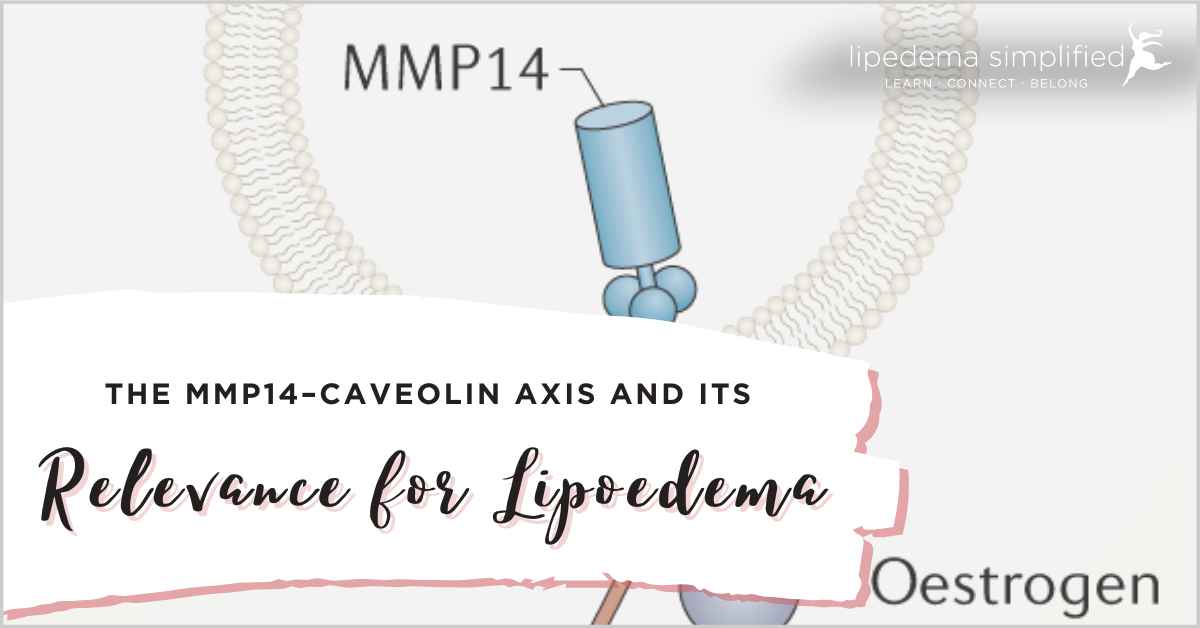
Exploring the Caveolin-MMP14 Connection in Lipedema: Insights and Interventions
Hi again! I’m Leslyn Keith, Director of Research and President of the Board for the Lipedema Project, back with another insightful Research Update Flash Briefing. Today, I’m excited to delve into a potentially pivotal study that sheds light on lipedema’s underlying mechanisms.
The Groundbreaking Study
In August 2020, a significant article was published in Nature Reviews Endocrinology, titled “The MMP14–caveolin axis and its potential relevance for lipoedema.” This collaborative research by teams in Germany and Texas has taken a major leap in understanding lipedema’s root causes.
The Role of Caveolin and MMP14
The study focuses on a protein named caveolin, or CAV1, and its interaction with the MMP14 enzyme. Researchers concluded that lipedema is potentially an estrogen-dependent disorder of adipose tissue, triggered by CAV1 dysfunction. When CAV1 is scarce, it disrupts communication with MMP14 and estrogen receptors, causing numerous issues.
The Impact on Adipose Tissue
The scarcity of CAV1 and a subsequent increase in MMP14 are observed in obesity and, it seems, in lipedema. This imbalance may explain several lipedema characteristics:
- MMP14 boosts adipocyte (fat cell) formation while suppressing leptin, the satiety hormone. This could explain why individuals with lipedema may feel constantly hungry and store excessive fat.
- Reduced CAV1 and heightened MMP14 lead to more flexible subcutaneous fat tissue, capable of holding more fluid. This may also be why lipedema predominantly affects women, as this change in CAV1 and MMP14 levels is estrogen-dependent.
- MMP14 also enhances the stability of fat cells, making them resistant to breakdown – a potential reason why lipedema fat is often unresponsive to exercise and certain diets.
The Impact on Lymphatics
This study also noted that the MMP14 enzyme inhibits the PROX1 gene, which is a key regulator of the lymphatic system. Other research has found that inhibition of PROX1 leads to lymphatic dysfunction. This may explain why many patients with lipedema have changes in lymphatic anatomy and/or function.
Pain in Lipedema: A Cytokine Connection
The study also suggests that decreased CAV1 could result in overexpression of inflammatory cytokines, possibly explaining the pain associated with lipedema.
Potential Interventions
The research opens up new avenues for intervention:
- Increasing CAV1 through thermomechanical stress: This could be why treatments like elastic taping, textured compression garments, and manual lymph drainage are beneficial.
- Pharmaceuticals: Certain drugs, including retinoids, corticosteroids, curcumin, and statins, might also elevate CAV1 levels.
Concluding Thoughts
This study provides a much-needed perspective on the complex nature of lipedema, highlighting the potential of targeted interventions. It’s a step forward in our journey to understand and effectively manage lipedema.
Stay Informed and Engaged:
- Keep abreast of the latest research for new insights.
- Explore various treatment options and discuss them with healthcare professionals.
- Engage with the lipedema community for support and shared experiences.
Don’t miss our next Research Update for more exciting discoveries in the world of lipedema research!
Don’t forget to subscribe to our daily Flash Briefings for more tips, tools, and research on managing lipedema. You can find us on Apple, Spotify, Amazon Alexa, or at lipedema-simplified.org/flash.
~Leslyn Keith, OTD, CLT-LANA
Board President, Director of Research | The Lipedema Project
